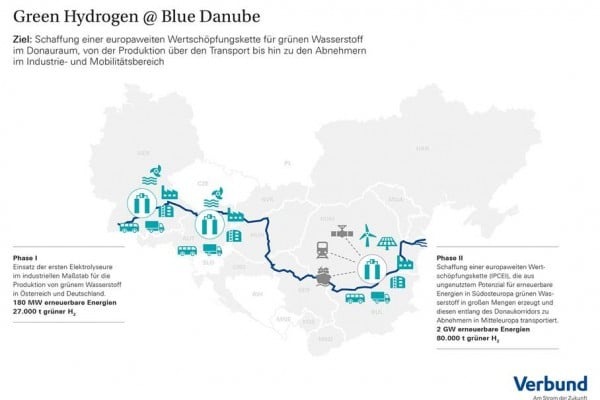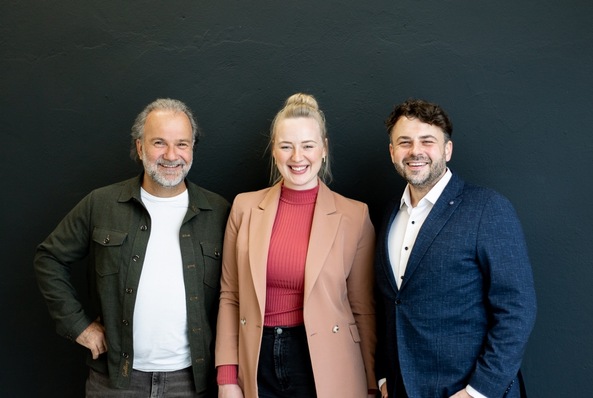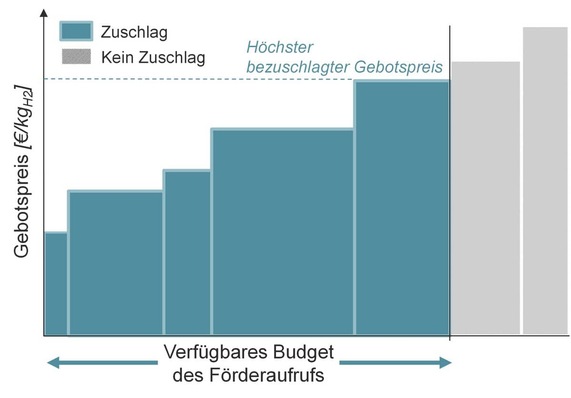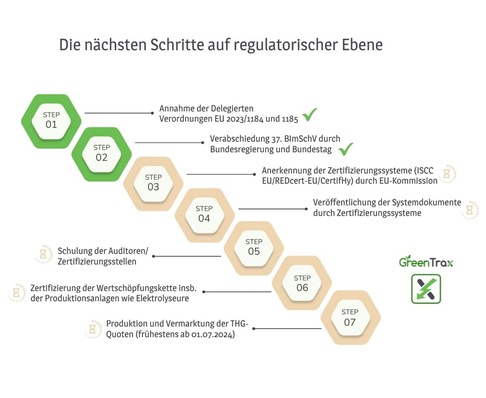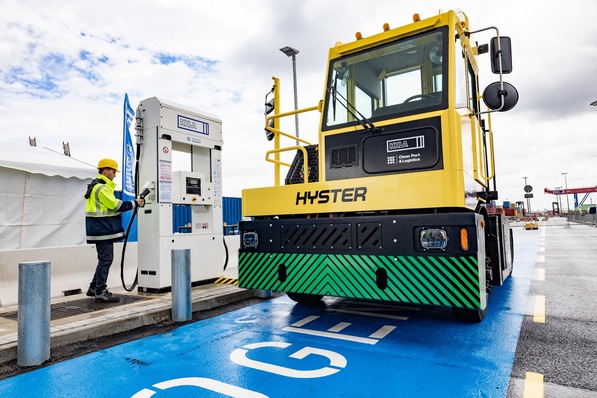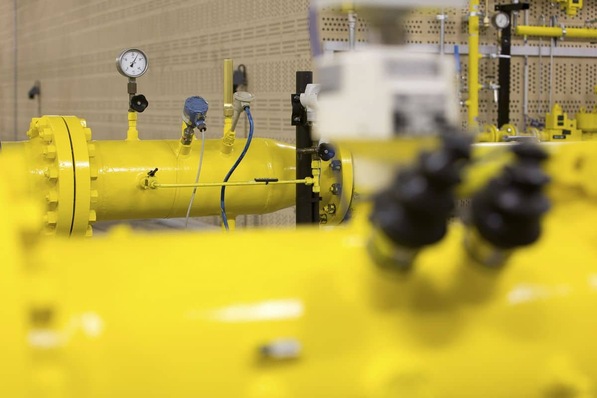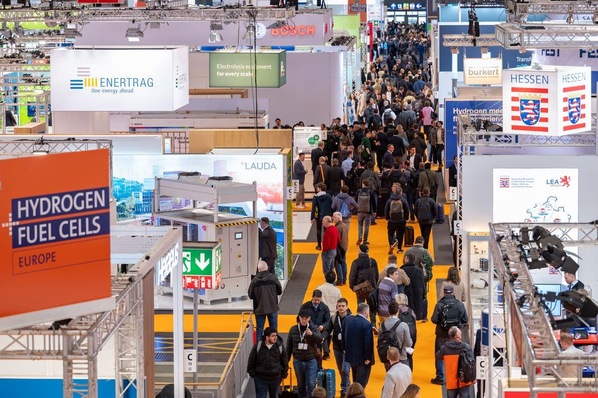While most countries in Western Europe laid out their strategies for hydrogen extraction some time ago, this southeastern member of the European Union has yet to take this step. Indeed the Romanian government isn’t planning to announce its hydrogen strategy until 2023. Huge potential exists for Romania to excel in the production of carbon-free hydrogen, however, given the country’s impressive sustainable energy mix.
In 2021, over 30 percent of Romania’s electricity consumption was met by hydropower. Almost 20 percent of electricity generation is provided for by nuclear power plants. And wind power, at over 11 percent, accounts for a significant share which is also growing rapidly.
Despite the lack of a national strategy, hydrogen development is well underway in Romania. The infrastructure side is being supported by the Three Seas Initiative or 3SI. This project has been actively involved in all EU states located between the Baltic, Adriatic and Black seas since 2016. It aims to promote cooperation on the implementation of major infrastructure schemes which will connect the region economically and drive it forward.
One of the ways in which 3SI has provided assistance is by helping grid operator Hidroelectrica Romania establish a joint venture for the construction of hydrogen pipelines. What’s more, Hidroelectrica has been taking part in the Green Hydrogen @ Blue Danube project alongside Austria (see fig. 1). Within the framework of the European Commission’s Important Projects of Common European Interest or IPCEIs, the states in the Danube region and in southeastern Europe are to be supplied with green hydrogen along the Danube and in southeastern Europe. Other participants include Austrian power company VERBUND as well as Hydrogenious LOHC Technologies in Germany.
A multitude of separate schemes
In 2009, Romania witnessed the founding of the National Research and Development Institute for Cryogenic and Isotopic Technologies ICSI and the National Center for Hydrogen and Fuel Cells CNHPC. Their remit is to encourage the introduction, development and spread of hydrogen-based energy technologies. However these initiatives have enjoyed only modest success. So far researchers from ICSI have developed two electric car prototypes that are powered by fuel cells and have a maximum range of around 200 miles (320 kilometers).
A pot of EUR 115 million is envisaged for the first 100 megawatts of green hydrogen production capacity. This funding is a key pillar in the country’s recovery program entitled Național de Redresare și Reziliență or PNNR for short. In Romania, industry giants Hidroelectrica, Romgaz (SNG), OMV Petrom (SNP), Liberty Galați as well as several wind power producers are all currently investigating options to produce green hydrogen.
Liberty Galați recently announced its intention to manufacture green steel and also to develop hydrogen-powered vehicles. Romgaz is planning use photovoltaic power plants to generate electricity which it will use to make hydrogen. The hydrogen will then fuel the company’s fleet of vehicles, 20 percent of which are to be converted to run on hydrogen. Also involved is Russian group Lukoil, which has a refinery in Ploiești. It too is expecting to take the first steps toward green hydrogen manufacturing. At the moment there are 13 industrial hydrogen producers in Romania and these principally use fossil fuels in their processes. Only Chimcomplex (CHOB) and Liberty Galați have projects to produce green hydrogen on their agenda.
Hence there is no shortage of initiatives from the hydrogen industry in Romania, but the lack of coordinated strategic planning has been viewed critically by local experts. Răzvan Nicolescu, Romania’s former energy minister, sees insufficient investment particularly when it comes to the integrated production chains needed by the hydrogen sector. “We talk a lot about hydrogen (...), but we haven’t yet actually asked ourselves how we can convince Cummins, one of the largest manufacturers of hydrogen plants, which is already based in Craiova, to produce electrolyzers in Romania,” explained Nicolescu with disappointment.
Infrastructure expansion
The operator of the national natural gas grid Transgaz (TGN) has been helped by the 3SI project in setting up a joint venture for the construction of hydrogen pipelines. Given the specifics of Romania’s energy requirement, the need to expand pipeline infrastructure is of primary importance. Romania anticipates that hydrogen will be chiefly deployed in industrial applications. The country experiences particularly high demand for energy from its domestic refineries, chemical works and steelmaking plants.
The focal point for the development of the Romanian hydrogen sector is the region to the southeast of the country. This is because the Black Sea coast is home to major branches of industry and is also the location for the planned expansion in offshore wind. The port of Constanta is often cited in this connection.
The Black Sea area offers Romania enormous potential in terms of wind energy generation – estimated at over 70,000 megawatts. “This energy is also due to be used for hydrogen production,” said former state secretary at the economy and energy ministry Niculae Havrilet.
The region that borders Ukraine in the north and Bulgaria in the south is known as Dobrogea. “Dobrogea ranks second after Scotland in terms of the size of potential for wind power generation in Europe. And this is where electrolyzer technology comes in, which allows the green energy generated by the wind turbines to be turned into green hydrogen,” explained Alexandru Bădescu from Cluster South East Europe at Linde Gaz Romania, speaking to the Romanian media.
In Dobrogea the wind conditions are well-nigh ideal for electricity generation. The area is inspiring lively interest from national and international wind farm developers. Leading the way in the use of wind power for hydrogen production in Dobrogea are companies Romgaz and OMV Petrom which are already working in partnership to unlock natural gas resources from the Black Sea.
Author: Aleksandra Fedorska


